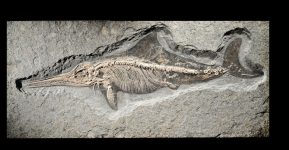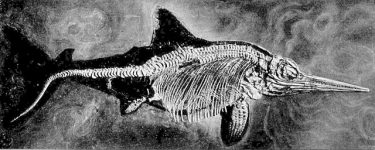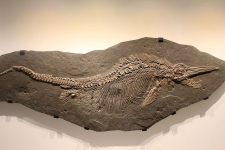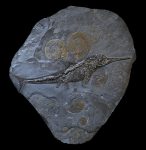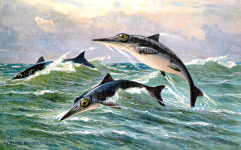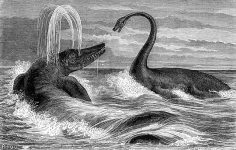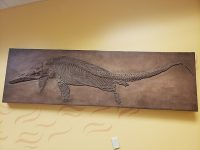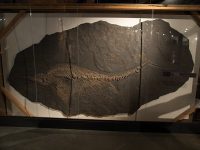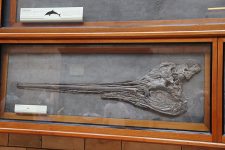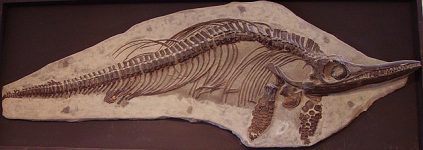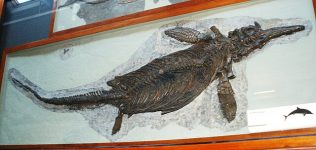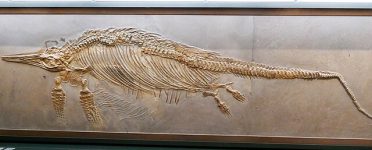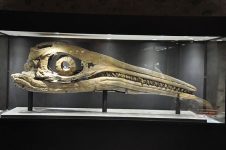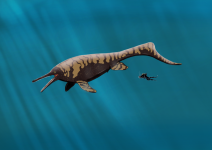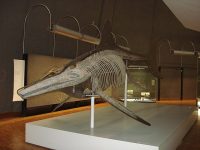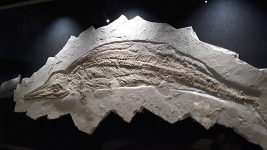Icthyosaurs
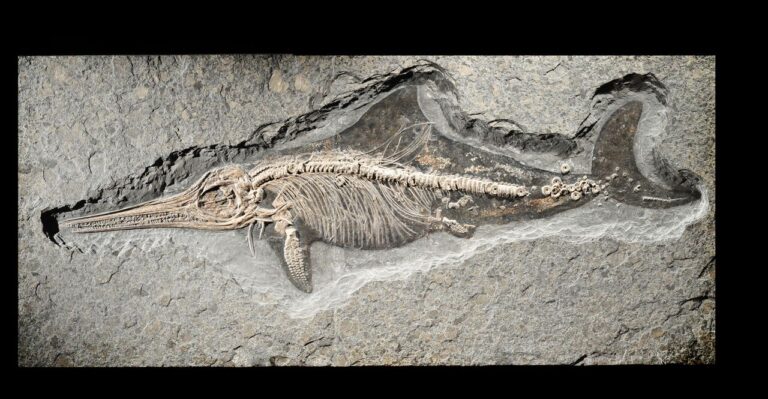
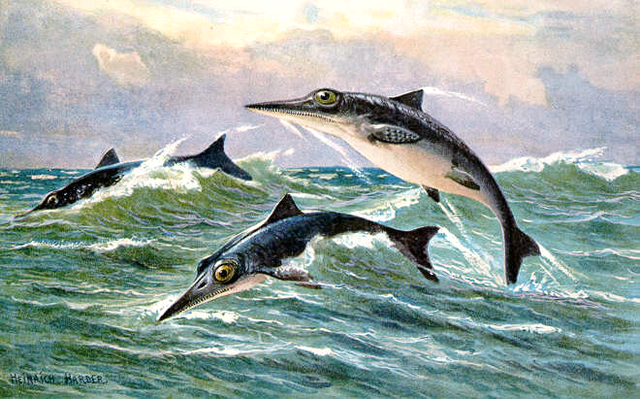
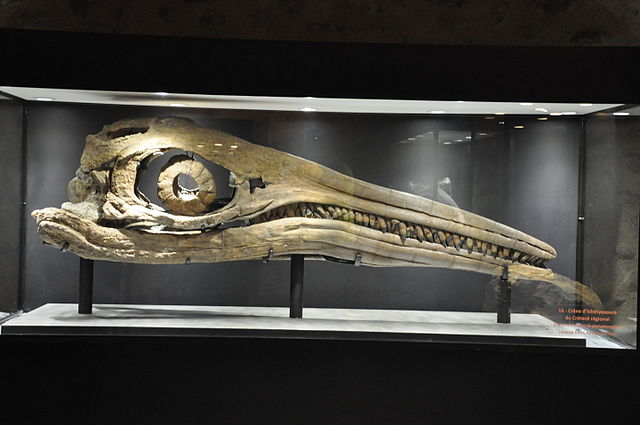
Icthyosaurs
Ichthyosaurs were a diverse group of marine reptiles that thrived during the Mesozoic Era, from approximately 250 to 90 million years ago. These streamlined predators evolved from land-dwelling reptiles but adapted to an entirely aquatic lifestyle, demonstrating remarkable adaptations for life in the open ocean.
Evolutionary Origins
Ichthyosaurs evolved from terrestrial reptiles that returned to the seas during the Early Triassic period, around 250 million years ago. Their ancestors were likely similar to early reptiles such as mesosaurs, but over time, ichthyosaurs developed specialized adaptations for swimming and hunting in marine environments.
Physical Characteristics
Ichthyosaurs were characterized by their streamlined bodies, resembling modern dolphins or porpoises. They had long, tapering snouts lined with sharp teeth, which they used to catch fish and other prey. Their limbs evolved into paddle-like flippers, enabling efficient propulsion through the water. Some species, such as Shonisaurus, reached lengths of up to 15 meters (50 feet), making them among the largest marine reptiles of all time.
Ecological Role and Adaptations
As apex predators of their time, ichthyosaurs played a crucial role in marine ecosystems. Their streamlined bodies and efficient swimming abilities allowed them to pursue fast-moving prey, including fish, squid, and other marine organisms. Ichthyosaurs had well-developed eyes adapted for underwater vision, indicating they were highly adapted to hunting in dimly lit ocean depths.
Fossil evidence suggests that ichthyosaurs gave birth to live young, rather than laying eggs like most reptiles. This reproductive strategy may have allowed them to give birth to fully developed offspring, enhancing their survival in the competitive marine environment.
Paleobiogeography and Diversity
Ichthyosaurs were widespread throughout the world’s oceans during the Mesozoic Era. Fossil discoveries have been made on every continent, indicating their global distribution and adaptation to diverse marine habitats. Different species of ichthyosaurs evolved over millions of years, resulting in a wide range of sizes and adaptations suited to different ecological niches.
Extinction and Legacy
Like many other marine reptiles and dinosaurs, ichthyosaurs became extinct by the end of the Cretaceous period, around 90 million years ago. The reasons for their extinction are not fully understood but may have been influenced by changes in oceanic environments, competition with other marine predators, or other ecological factors.
Despite their extinction, ichthyosaurs left a lasting legacy in the fossil record. Their well-preserved skeletons provide valuable insights into the evolution of marine reptiles and the adaptations that allowed them to thrive in ancient oceans. Fossil specimens have been instrumental in reconstructing the anatomy, behavior, and evolutionary relationships of ichthyosaurs with other marine and terrestrial reptiles.
Scientific Contributions and Research
Ichthyosaurs have been subjects of intensive scientific study since their discovery in the early 19th century. Paleontologists have documented numerous species and genera, revealing the diversity and evolutionary history of these ancient marine reptiles. Advances in imaging technology and paleontological techniques have enabled researchers to reconstruct the soft tissues and internal anatomy of ichthyosaurs, providing deeper insights into their physiology and evolutionary adaptations.
Cultural Significance
Ichthyosaurs have captured the imagination of scientists and the public alike, appearing in popular media, literature, and documentaries about prehistoric life. Their sleek, dolphin-like appearance and evolutionary journey from land to sea continue to inspire fascination and scientific inquiry into the mysteries of Earth’s ancient oceans.
